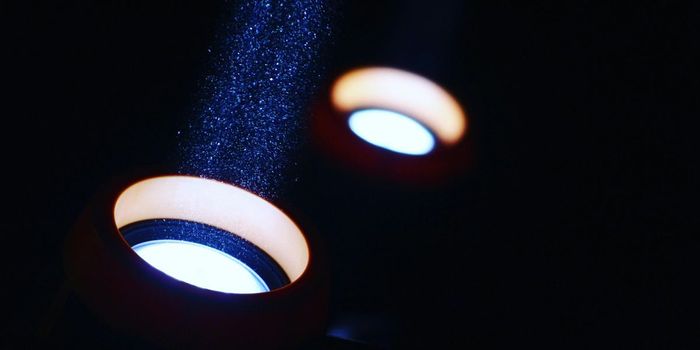These Plants Are Engineered to Glow Like Lamps
Engineers from The Massachusetts Institute of Technology (MIT) have successfully designed watercress plants that give off several hours of low-level light. They do this through a process called plant nanobionics, a burgeoning research area from the lab of Michael Strano, Carbon P. Dubbs Professor of Chemical Engineering at MIT.
Nanobionics refers to the process through which nanoparticles are embedded into a plant to give it new capabilities; in this case to give bioluminescence to a plant that does not normally glow. The nanoparticles transfer luciferase to the plant – this is the enzyme that allows fireflies to give off light. This group of engineers has also designed plants that can monitor drought, detect explosives and communicate with smartphones.
The watercress plant was able to give off 3.5 hours of light and other plants including kale, arugula and spinach have also been engineered to glow.
“The vision is to make a plant that will function as a desk lamp — a lamp that you don’t have to plug in. The light is ultimately powered by the energy metabolism of the plant itself,” says Strano, senior author of the study published in the journal Nano Letters and funded by the U.S. Department of Energy. The researchers also hope to be able to scale this process up to include larger plants so that in the future our streets can be lined with growing streetlamps.
Three components must be embedded into a plant for it be given the ability to glow: luciferase, a molecule called luciferin that luciferase interacts with to emit a glow, and a molecule called co-enzyme A, which removes a byproduct that can inhibit the glow. These three components are each given a unique nanoparticle carrier made of materials which, according to an MIT press release, the U.S. Food and Drug Administration classifies as “generally regarded as safe.” The materials include silica and the polymers PLGA and chitosan. The nanoparticles’ job is to take each component to a certain area of the plant and to keep the components at levels that are safe and non-toxic to the plant.
To embed the nanoparticles, plants are immersed in a solution in which the specialized particles have been suspended. High pressure is then applied to the plants, which pushes the nanoparticles into the pores of the leaves.
Other endeavors to make plants glow have relied on genetic engineering, which MIT describes as a “laborious” process that is only able to produce very low levels of illumination.
“Our target is to perform one treatment when the plant is a seedling or a mature plant, and have it last for the lifetime of the plant,” Strano says. The team also hopes to use a luciferase inhibitor to control the plant’s light and create plants that can adjust their glow in reaction to the level of light around them, much like contemporary conventional dusk to dawn lightbulbs.









